If you spend a lot of time driving through the snow, you have probably driven your vehicle over more than one mound of it. Should you be wondering if this element can damage your undercarriage, we can answer that question. We researched the science behind what snow does to your undercarriage so you'll know for sure what it is capable of doing.
Snow can pack itself into gaps underneath your vehicle and cause damage. Driving over mounds of snow can also damage other vital parts beneath your car.
Now that we know that snow can damage the undercarriage over time, we'll look at the ways this damage can happen. You might also be curious if you should wash your car in the winter or which cars rust the most. For the answers to these questions and more, read ahead in this post and see what our research has uncovered.
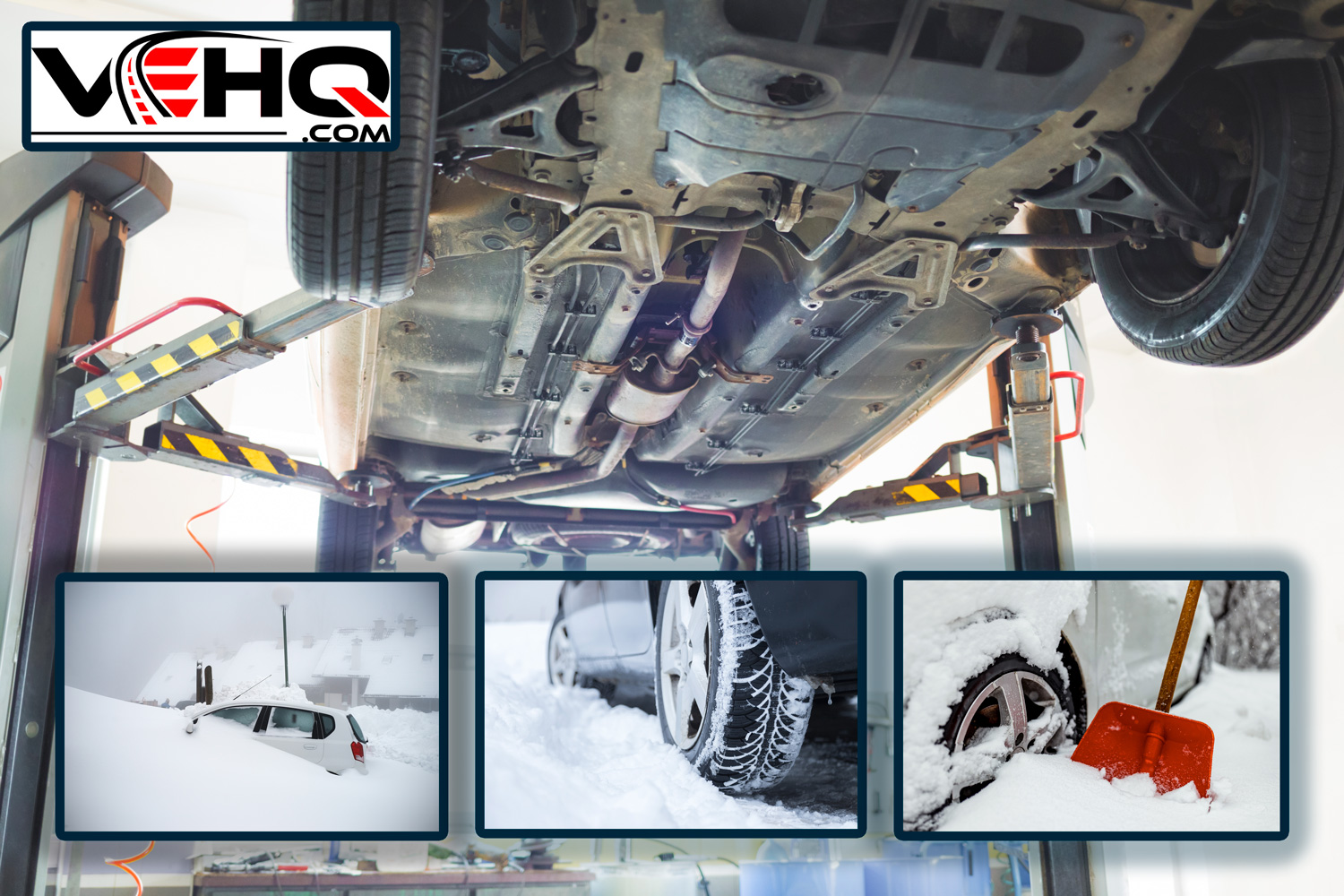
What Snow Can Do Underneath Your Vehicle
The undercarriage of your vehicle isn't one solid mass. There are a lot of gaps, nooks, and crannies underneath the vehicle. There are also a lot of important parts that are mere inches from the surface of the road.
When you drive over snow, it will splash up under the vehicle. The deeper the snow, the more that will come into contact with the undercarriage. This snow will become lodged inside the gaps underneath your vehicle.
Snow will melt, leaving behind a bit of moisture. This moisture can stay in these gaps and slowly cause your vehicle to rust. This process takes a LOT of time, however.
The main danger snow and ice pose to your vehicle aren't the elements themselves. Rather, the immediate risk involves the substances that are used to treat the roadways.
Should I Wash My Car In The Winter?
The roadways are normally treated with rock salt in the winter. The friction from the tires combines with the melting agents within the salt, which will reduce snow and ice to slushy puddles of water. While this makes driving safer, it will do damage to your vehicle over time.
It's important to routinely wash your vehicle in the winter if you drive in the snow and ice. Thorough washing will remove the dirt, debris, and, most importantly, the salt under your vehicle. Salt will cause the metal under your vehicle to oxidize, creating an expensive situation for you.
Keep in mind that not all car washes will be open during cold weather. Their equipment might not be able to operate below 40 degrees Fahrenheit. But some will be operable until the temperature drops to freezing. If the temperature is 32 degrees or below, you should avoid washing your vehicle.
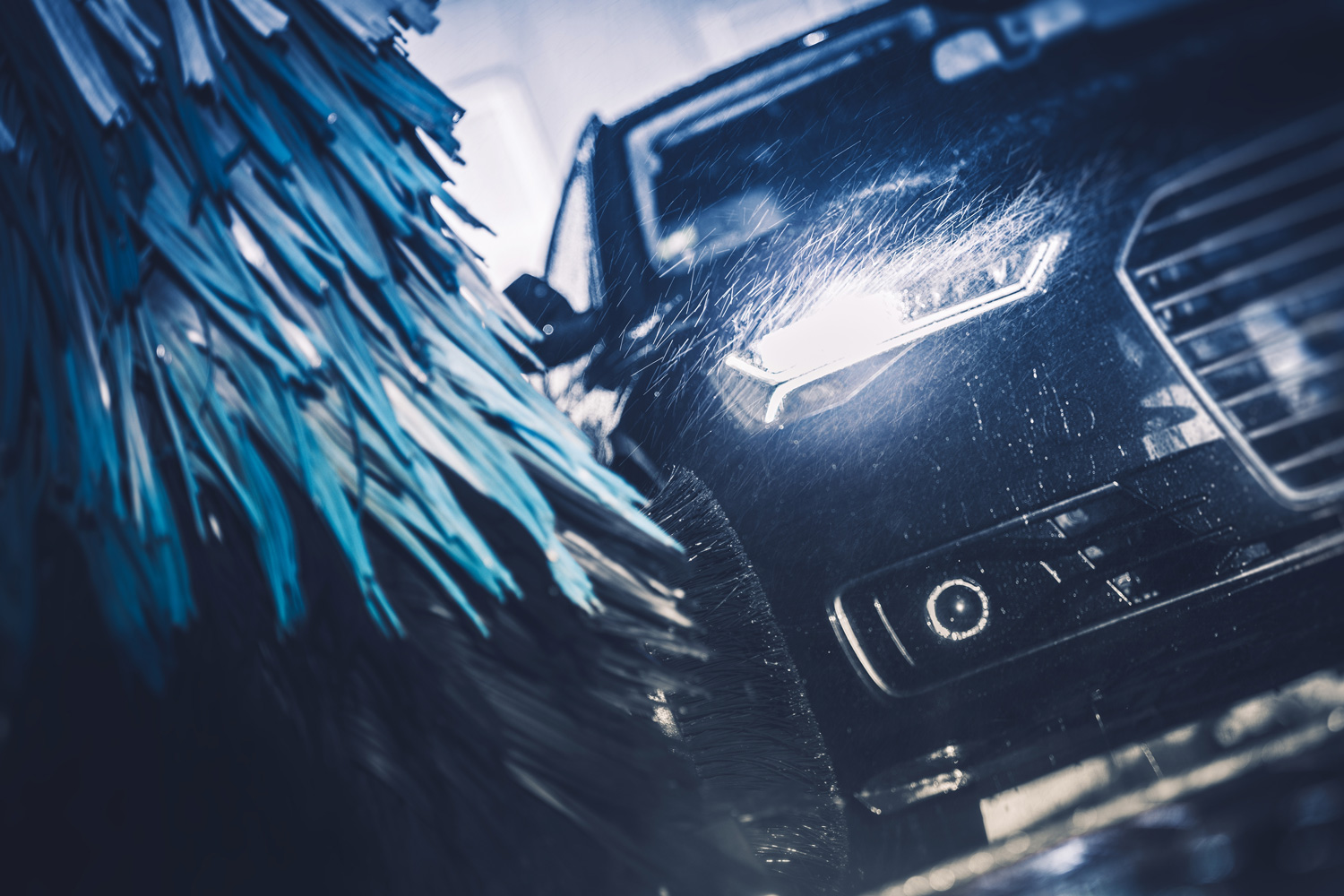
Why You Shouldn't Wash A Car In Freezing Temperatures
While you should wash your car in the winter to rid it of road salt, the weather might not always cooperate. There is a point that it simply becomes too cold to do this chore.
Car washes will shut down when temperatures approach the freezing point. There are several reasons for this. They will not want the liability of the damage you can do to a vehicle. Freezing water creates ice, which makes slip-and-falls possible. They will also not want their equipment exposed to freezing temperatures.
Water will quickly freeze. This poses a risk to your windows, locks, and even your doors. Waxes and other finishes should never be applied when the temperature is below 40 degrees.
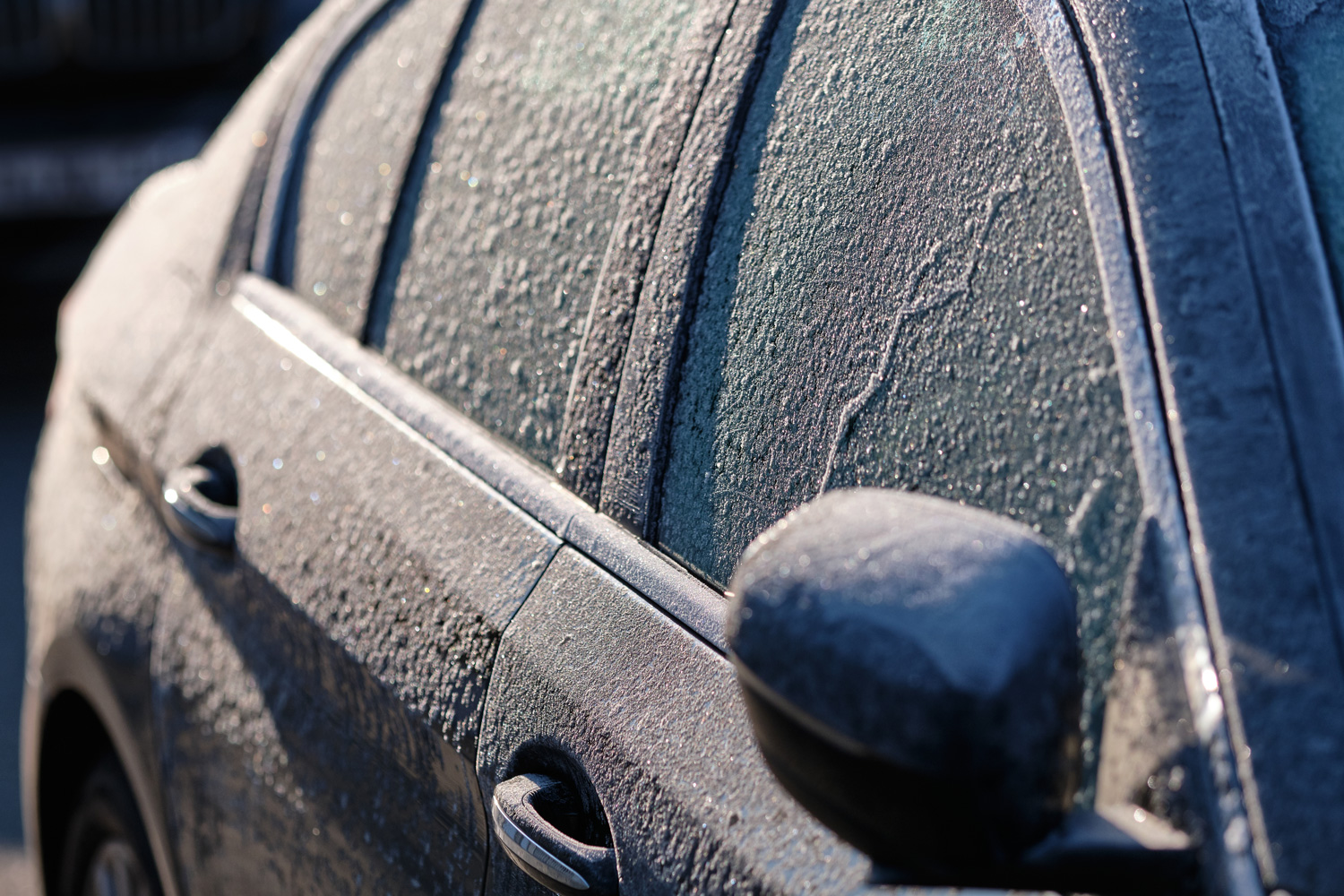
How Do You Know If Your Undercarriage Is Damaged?
If you hit a bump or a pothole, you might be concerned about damage to your undercarriage. Thankfully, there are ways you can almost immediately tell.
Look For Leaks
Should you notice leaking fluids, this is a telltale sign that the bump did some damage. Not all leaks will just pour out of your vehicle, however. We suggest setting a large piece of cardboard under your vehicle after you park it. Any leaks will appear, and their color will help determine what is leaking.
The undercarriage is meant to protect a lot of fluid lines, your oil pan, and other vital parts. Any leaks should be evaluated and remedied immediately so that no further damage is done.
Listen For Odd Sounds
Remember that your entire exhaust system is underneath your vehicle. A bad bump can damage your muffler, exhaust line, or catalytic converter.
Damage to any of these parts can impact how your car sounds. This will be especially noticeable during acceleration. Exhaust damage should be repaired immediately, as these fumes are harmful to you and the environment.
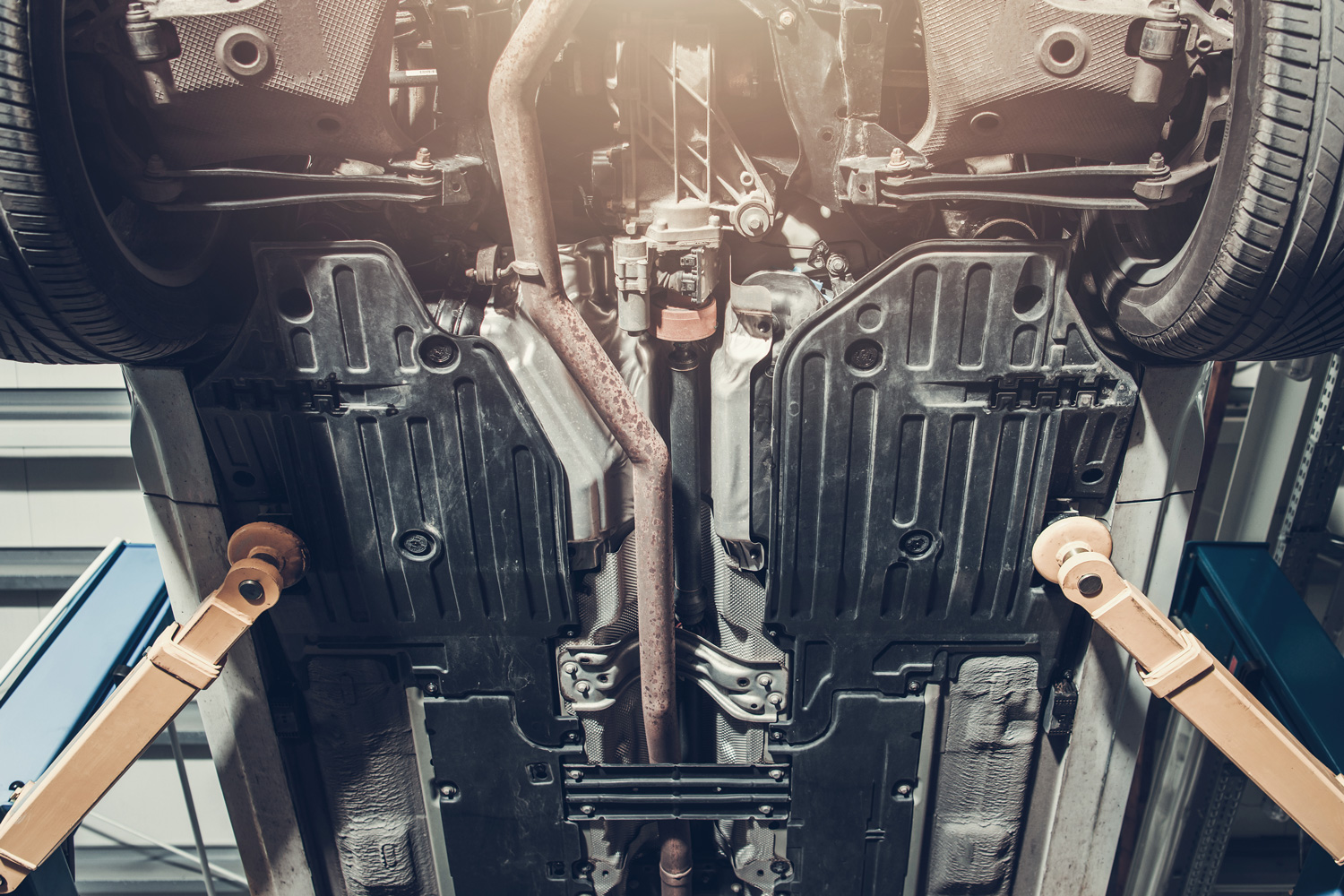
Is Undercarriage Damage Expensive?
If you damage your vehicle's undercarriage, you might be wondering what repairs can cost you. The answer to this question isn't so simple. The cost will depend on what is damaged and how long you wait for the damage to get fixed.
Simple items like fluid lines will not usually be very costly. But if you delay repairing one, it can cause a lot more damage.
Suppose you hit an object that damages your oil pan, making it leak oil. If you allow all the oil to seep out and continue to drive your vehicle, the engine will suffer costly damage.
Always inspect your undercarriage for damage after hitting an object. Don't delay getting any damaged components fixed!
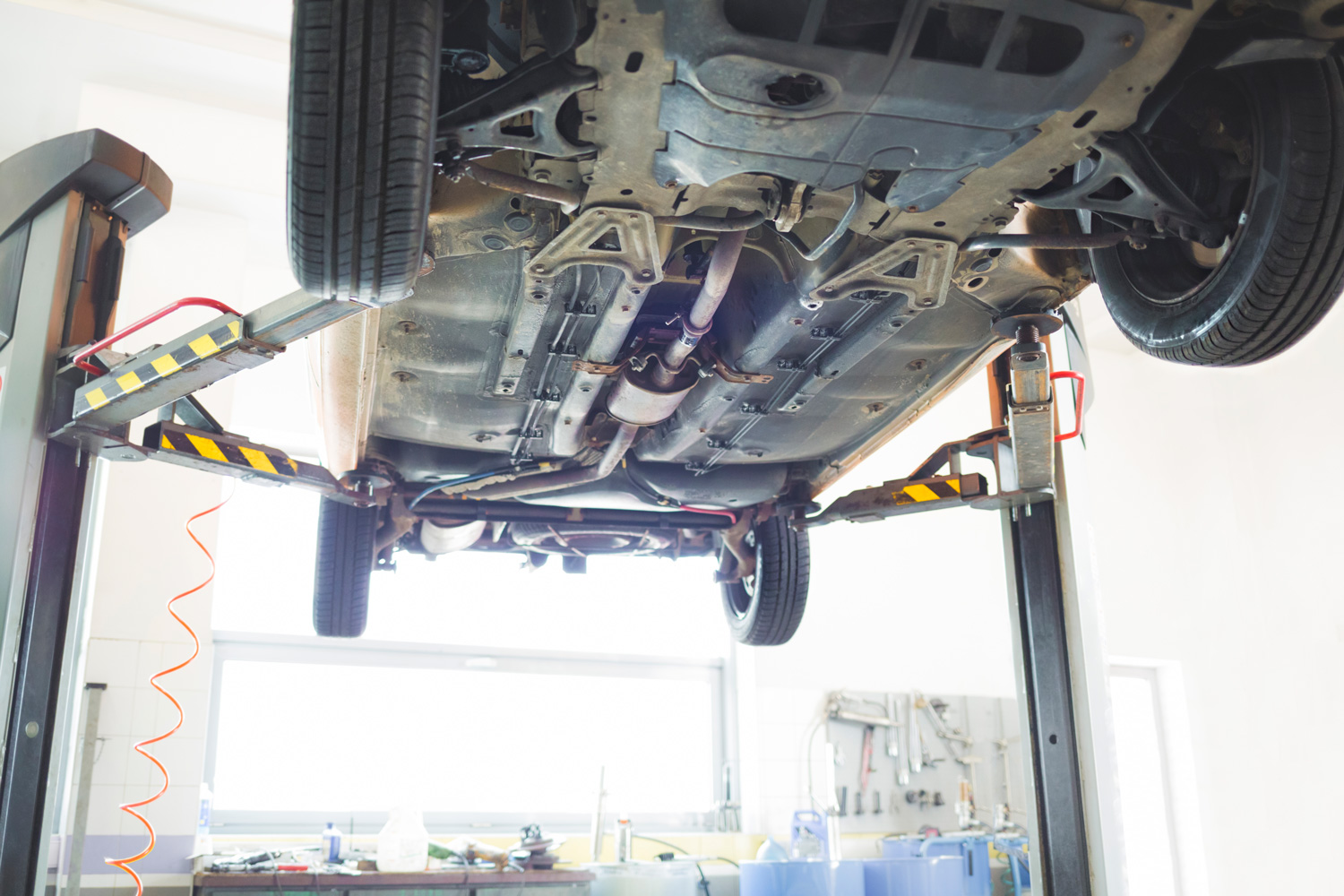
Can The Rust On An Undercarriage Be Removed?
Over time, rust will begin to appear on your vehicle. No matter how well you maintain it, metal will oxidize over time. The protective layer to prevent exposure will wear over time, and rust spots will begin to show.
Thankfully, rust spots can be treated. They can be sanded away and removed completely. This is a bit of a process and should be tackled by a professional. They will ensure that the job is done correctly and that all spots are taken care of.
The sooner you get these spots identified and fixed, the cheaper and easier it will be. If you wait too long, the rust will eat through the metal entirely, forcing you to replace it.
On older vehicles, it's important to do a rust inspection twice a year. This is particularly important if you have a vehicle that is driven in areas where there is a lot of snow and/or ice.
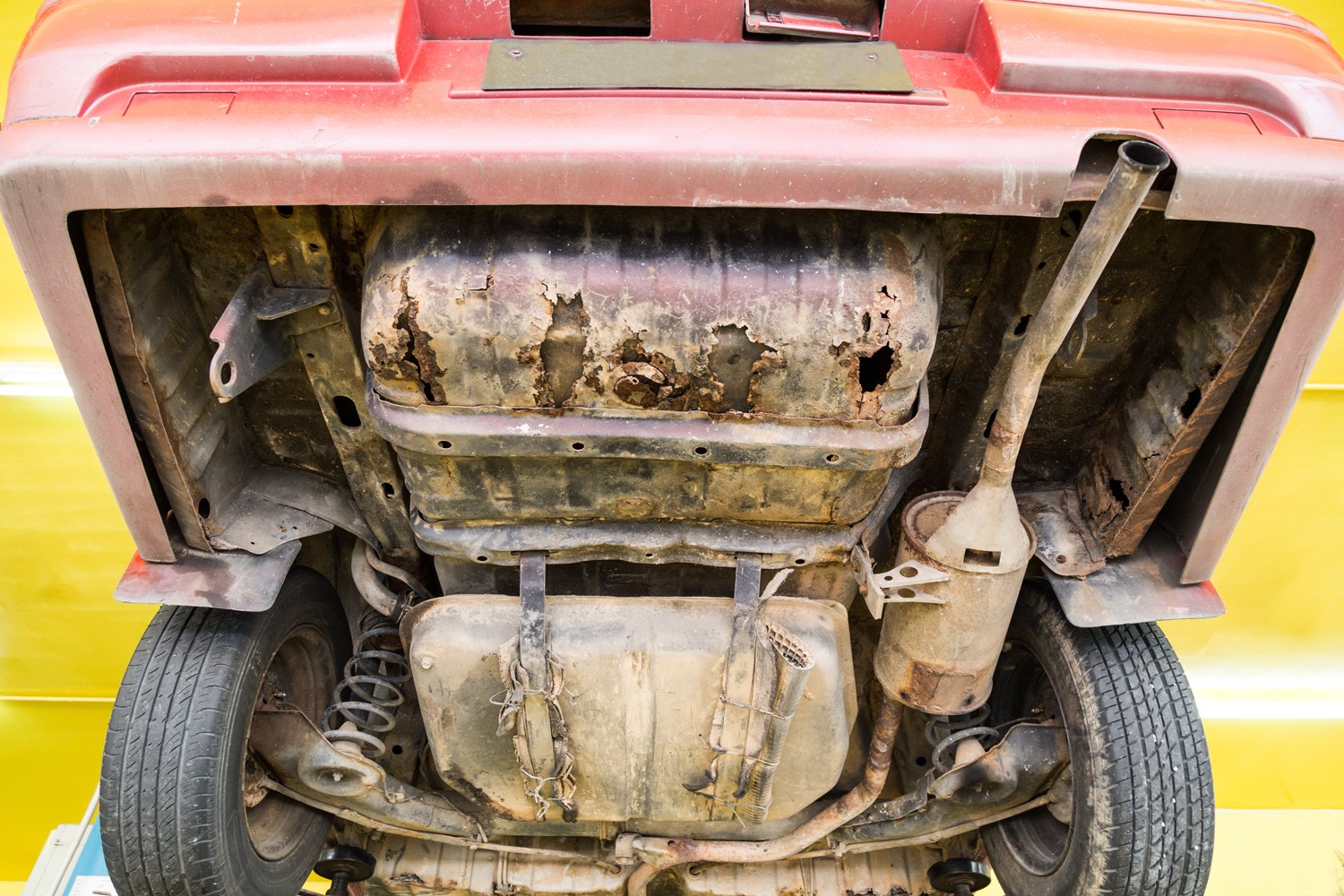
Which Cars Rust The Most?
You will encounter some cars that will be more susceptible to rusting. That doesn't mean that they are bad vehicles. If you properly maintain them, you will stave off oxidation for many years.
Here is a list of cars that are most likely to rust. This list is not all-inclusive.
- Ford Focus
- Ford Fiesta
- Ford Bronco
- Chevy Silverado
- Suzuki Samurai
- Pontiac Grand Am
- Dodge Ram 1500
What Cars Seem To Be The Most Rustproof?
Some models are manufactured to be less prone to rust. While this list isn't all-inclusive, it covers many of the cars on the road that you might see that resist oxidation.
- Audi A3
- Audi A4
- Audi S4
- Volkswagen Golf
- Volkswagen Jetta
- Volkswagen Beetle
- Volvo S40
- Volvo V50
- Volvo V70
- BMW 3 Series
- Mini Cooper
- Honda Civic
- Honda Accord
- Honda Fit
- Honda Odyssey
Final Thoughts
Snow can do long-term damage to your vehicle, but not as much as the road salt will do. It's important to routinely wash your vehicles in the winter to remove this harmful element. Some vehicles will rust more than others, but if you properly maintain them, you can stave off oxidation for years. Drive safe!
We hope this post answered all of your questions about snow and your undercarriage. For more helpful information, we suggest reading the following posts:
Do Car Covers Damage Your Car? [Inc. 4 Things You Can Do To Prevent Damage]
